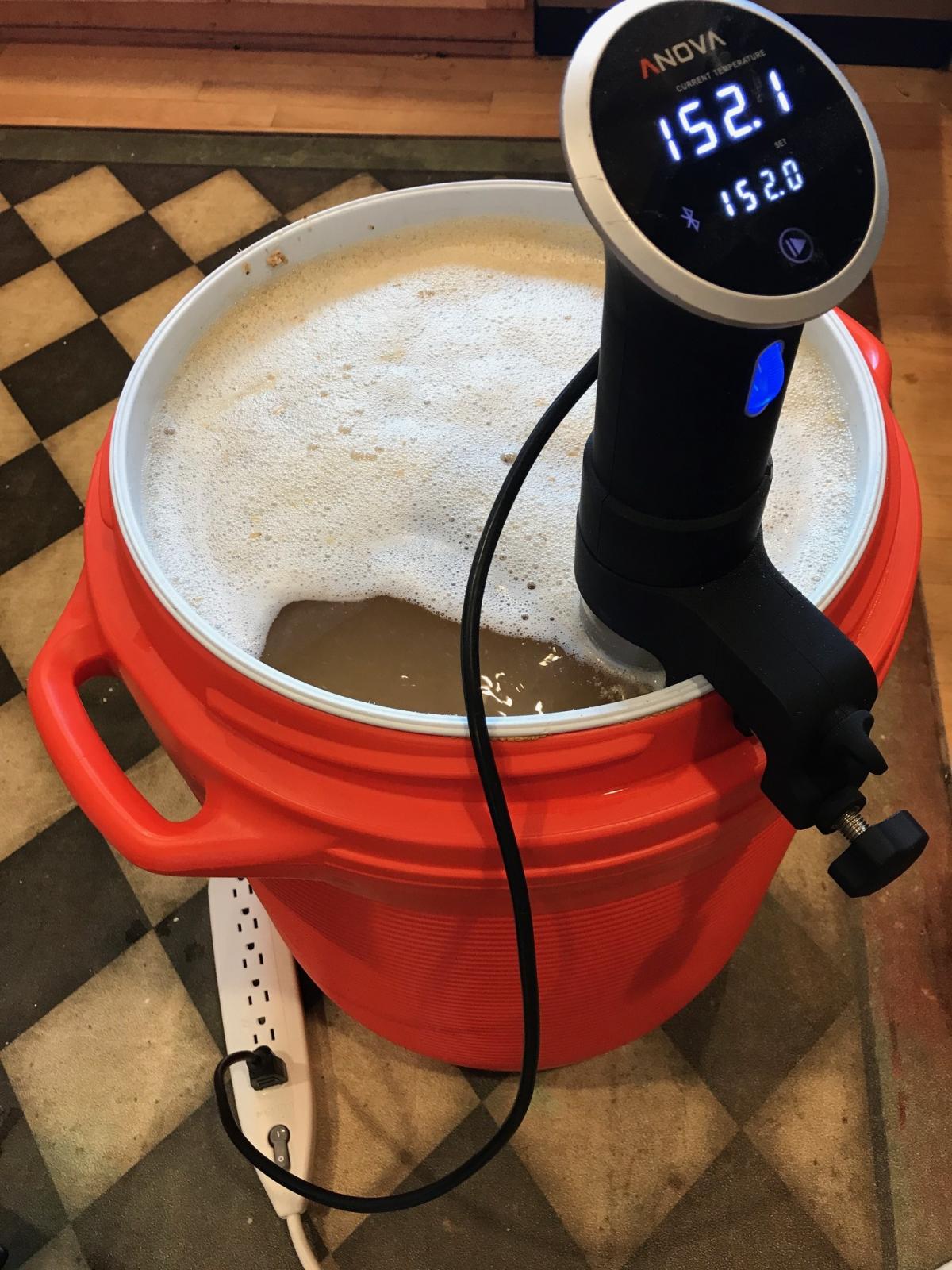oddcopter
Active Member
- Joined
- Aug 7, 2017
- Messages
- 41
- Reaction score
- 17
I'm new to home brewing and decided to bypass extracts and go straight to BIAB.
My wife and I bought a sous vide machine a few years back. We used it a couple of times then it got stored away.
When researching BIAB, I read a lot about temperature control and the sous vide immediately came to mind. I watched a few videos of people using the machine directly in the mash, but the sous vide is designed to heat water to a stable temp forming a bath to cook.
So, this is the approach I took. After, adding my grain to the brew bag, I moved it to a sous vide bath in a cooler. Here is a pic:

The logistics involved were a bit more complicated than the photo implies.
My wife and I bought a sous vide machine a few years back. We used it a couple of times then it got stored away.
When researching BIAB, I read a lot about temperature control and the sous vide immediately came to mind. I watched a few videos of people using the machine directly in the mash, but the sous vide is designed to heat water to a stable temp forming a bath to cook.
So, this is the approach I took. After, adding my grain to the brew bag, I moved it to a sous vide bath in a cooler. Here is a pic:
The logistics involved were a bit more complicated than the photo implies.
Last edited:





![Craft A Brew - Safale BE-256 Yeast - Fermentis - Belgian Ale Dry Yeast - For Belgian & Strong Ales - Ingredients for Home Brewing - Beer Making Supplies - [3 Pack]](https://m.media-amazon.com/images/I/51bcKEwQmWL._SL500_.jpg)























































